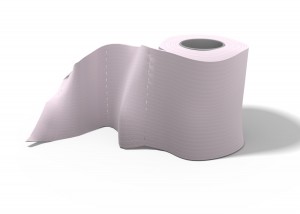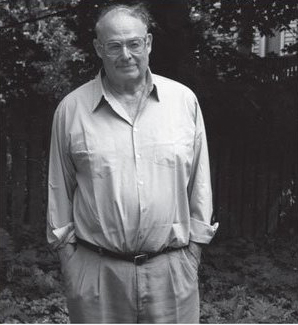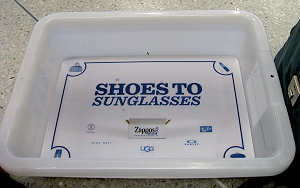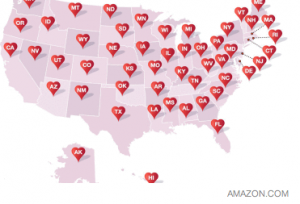A celestial spectacle will pass through the sky022 ArchivesOct. 14. And you have an opportunity to safelywatch.
The looming annular solar eclipse will be visible to millions in the U.S. as well as folks in Central and South America. Some will see the complete annular eclipse, wherein the moon passing in front of the sun creates a "ring of fire" view. Many others will experience a partial solar eclipse, as only part of the moon, from their vantage point, traverses our star. A partial eclipse will be visible in all 48 contiguous states (details below).
Crucially, it's dangerous to watch this solar eclipse without eye protection.
"The sun is never completely blocked by the moon during an annular solar eclipse," NASA emphasizes. "Therefore, during an annular eclipse, it is never safe to look directly at the sun without specialized eye protection designed for solar viewing."
SEE ALSO: NASA spacecraft flies right through sun explosion, captures footageAnd using a camera or telescope is even worse. "Viewing any part of the bright sun through a camera lens, binoculars, or a telescope without a special-purpose solar filter secured over the front of the optics will instantly cause severe eye injury," the space agency said.
There's only one way to directlyview a solar eclipse safely. That's with approved safety glasses or solar viewers that filter out harmful types of light. These viewers must meet the international standard "ISO 12312-2." That's the key number to look for when making your purchase.
(If you don't have eclipse glasses, there are indirect ways to view the eclipse, such as by making a pinhole projector, which NASA discusses here: https://science.nasa.gov/eclipses/future-eclipses/eclipse-2023/nasa-the-eclipse/.)
- Don't use damaged or scratched viewers.
- Use the eclipse viewers overyour regular glasses (if you wear glasses).
- Don't remove the viewers until you've turned or looked away from the sun.
 NASA employees watching an eclipse with eclipse glasses. Credit: NASA / Connie Moore
NASA employees watching an eclipse with eclipse glasses. Credit: NASA / Connie Moore The American Astronomical Society (AAS) has amassed a great list of vetted sellers. You can find them at https://eclipse.aas.org/resources/solar-filters.
If you choose to buy your eclipse glasses from a website, you might see if the vendor is selling products that have been vetted by the AAS. There's a risk of purchasing unsafe or misleading products.
"In the weeks leading up to the August 2017 U.S. solar eclipse, such sites hosted numerous sellers of eclipse glasses and other solar viewers that had not been properly tested and shown to be safe," the AAS said. "We recommend that if you shop in an online marketplace (for example, to find eclipse glasses at the lowest price), you make sure that (1) the seller is identified on the site and (2) the seller is listed on this page. Otherwise you can't be sure you're getting a product you can trust to protect your eyes."
Want more scienceand tech news delivered straight to your inbox? Sign up for Mashable's Light Speed newslettertoday.
It's also possible that your local library has free solar viewing glasses available. Millions have been distributed to libraries around the U.S. You can see if your library is participating via Solar Eclipse Activities for Libraries (SEAL). (I suggest calling them before going; my local library in Vermont was extremely helpful and responsive, and provided glasses.)
The NASA map below shows where in the U.S. the full annular "ring of fire" solar eclipse will be visible (if weather allows, that is). It's the path on the left traveling from Oregon through Texas. It begins in Oregon at 9:13 a.m. PDT and ends in Texas at 12:03 p.m. CDT.
 The path of the 2023 annular solar eclipse (on left) and 2024 total solar eclipse (on right). Credit: NASA / Scientific Visualization Studio / Michala Garrison; eclipse calculations by Ernie Wright, NASA Goddard Space Flight Center
The path of the 2023 annular solar eclipse (on left) and 2024 total solar eclipse (on right). Credit: NASA / Scientific Visualization Studio / Michala Garrison; eclipse calculations by Ernie Wright, NASA Goddard Space Flight Center But many more people, though not in the path of the full eclipse, can still see a partial eclipse. The website Great American Eclipse has a number of maps and schedules showing when one can view the eclipse. For example, on Oct. 14, 2023, the moon starts blocking out part of the sun in Bryce Canyon National Park at 9:09 a.m. MDT. The full annular eclipse occurs there at 10:29 a.m. MDT, lasting for nearly three minutes. Then, the eclipse completely ends at 11:57 a.m. MDT.
The map below from NASA gives an idea of how the solar eclipse — specifically how much of the sun will be covered by the moon — will be visible in different regions at 10:50 a.m. ET on Oct. 14, 2023.
 A map showing how much of the sun will be eclipsed at 10:50 a.m. ET on Oct. 14, 2023. Credit: NASA / Screenshot
A map showing how much of the sun will be eclipsed at 10:50 a.m. ET on Oct. 14, 2023. Credit: NASA / Screenshot This Oct. 14 event is the last annular solar eclipsethat will be visible from the U.S. for quite a while. The next one doesn't happen until June 21, 2039.
Be safe. Be astonished.
This story has been updated with more information about how to find solar viewing glasses.
 Exceptionally rare radio sources detected in the distant universe
Exceptionally rare radio sources detected in the distant universe
 Digital Diary, and Other News by Sadie Stein
Digital Diary, and Other News by Sadie Stein
 Getting Caught by Drew Bratcher
Getting Caught by Drew Bratcher
 Richard G. Stern, 1928–2013 by The Paris Review
Richard G. Stern, 1928–2013 by The Paris Review
 Sir George Douglas’s “The Strange Visitor” by Sadie Stein
Sir George Douglas’s “The Strange Visitor” by Sadie Stein
 Caveat Emptor by Jason Novak
Caveat Emptor by Jason Novak
 Early Failures by Ben Pfeiffer
Early Failures by Ben Pfeiffer
 Study trains Port Jackson sharks to respond to jazz music
Study trains Port Jackson sharks to respond to jazz music
 Down the Rabbit Hole by Sadie Stein
Down the Rabbit Hole by Sadie Stein
 NYT mini crossword answers for May 9, 2025
NYT mini crossword answers for May 9, 2025
 NYT Connections hints and answers for June 6: Tips to solve 'Connections' #726.
NYT Connections hints and answers for June 6: Tips to solve 'Connections' #726.
 Hear That Lonesome Gasket Blow: Part 1 by Evan James
Hear That Lonesome Gasket Blow: Part 1 by Evan James
 Love in Amish Country by Rachel Yoder
Love in Amish Country by Rachel Yoder
 Source of All Joy: On Alina Szapocznikow by Yevgeniya Traps
Source of All Joy: On Alina Szapocznikow by Yevgeniya Traps
 What We’re Loving: Carson, Hatterr, Fidel by The Paris Review
What We’re Loving: Carson, Hatterr, Fidel by The Paris Review
 When Agatha Christie Was Investigated by MI5 by Sadie Stein
When Agatha Christie Was Investigated by MI5 by Sadie Stein
 America in Love, and Other News by Sadie Stein
America in Love, and Other News by Sadie Stein
Cooking with Ntozake Shange by Valerie StiversWhat Makes a Poet Difficult? by Stephanie BurtRedux: Disappointment Is Oily by The Paris ReviewOther People’s Photographs by Lucy SanteBest TV deal: Save $20 on Amazon Fire TV 2The Winners of 92Y’s 2019 Discovery Poetry Contest by The Paris ReviewRedux: Summer Surprised Us by The Paris ReviewRedux: April in Paris by The Paris ReviewHow to Buy a Rock by Jessi Jezewska StevensMs. Difficult: Translating Emily Dickinson by Ana Luísa AmaralOn Fasting by Kaveh AkbarSomehow I Became Respectable by John WatersWriters’ Fridges: Kristen Arnett by Kristen ArnettKilling Time by Anna FunderThe Art of Doodling by The Paris ReviewThe Ideal Place to Disappear: An Interview with Julia Phillips by Jennifer WilsonMystical, Squishy, Distinctly Unsettling by The Paris ReviewOn The Importance of Not Writing by Mesha MarenCooking with Martial and Catullus by Valerie StiversReframing Agnes by RL Goldberg Critics with Sharp Objects, and Other News by Dan Piepenbring This Is Growing Up by Justin Alvarez Troy to Ithaca by Sadie Stein Many Happy Returns, Penelope Fitzgerald by Sadie Stein The Morning Roundup for January 17, 2014 Cecil Frances Alexander’s “Once in Royal David’s City” by Sadie Stein Anthony Cudahy Punning on John Updike What We’re Loving: Twain, Gilbert, Visconti by The Paris Review If Looks Could Kill by Sadie Stein Lysley Tenorio’s Window on the World Illustrated author portmanteaux of the two Happy Birthday, Isaac Asimov (Maybe), and Other News by Sadie Stein See the 2023 solar eclipse hit Earth in vivid satellite footage Listen to Garrison Keillor, Iris Murdoch, and William Styron! by Sadie Stein Our New Year’s Resolution: Spend More Time with the Kids by Dan Piepenbring Franzen on Kraus: Footnote 89 by Jonathan Franzen Timothy Leo Taranto’s illustrated author pun of Ralph Ellison The Joyce Lee Method of Scientific Facial Exercises by Justin Alvarez Holidays, via The Paris Review by Sadie Stein
2.4815s , 10161.28125 kb
Copyright © 2025 Powered by 【2022 Archives】,Inspiration Information Network